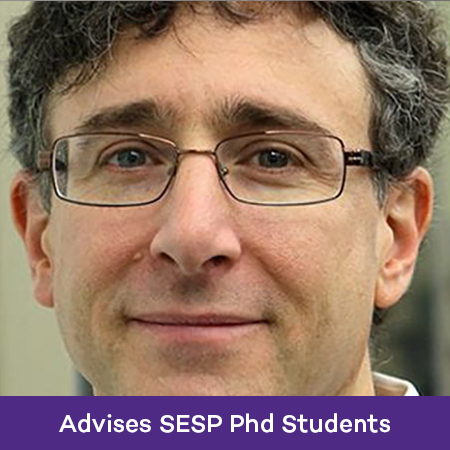Bruce Sherin
- Professor, Learning Sciences

Bruce Sherin’s work focuses primarily on conceptual change in science—the process through which our everyday understanding of the natural world changes over time and with instruction. In early work, he engaged in the design and study of novel interventions for physics instruction, with particular emphasis on the role of symbolic representations. As part of that work, he explicated his theory of Symbolic Forms, which captures the conceptual structures that successful physics experts learn to see in equations. More recently, his work has focused on some methodological issues in the study of conceptual change. As part of this newer work, he applies techniques from natural language processing to interview protocols. He is also the designer and developer of Tactic Text, which is a web-based text mining environment designed for qualitative data analysts. To read more about Tactic go to http://tactic.readthedocs.io.
Sherin, B., Star, J. (Working Paper/In Press/Under Review). Reflections on the Study of Teacher Noticing in Sherin, M., Jacobs, V., Philipp, R., Mathematics teacher noticing: Seeing through teachers’ eyes (pp. 66-78). Routledge.
Sherin, Bruce (2013). A computational study of commonsense science: An exploration in the automated analysis of clinical interview data. Journal of the Learning Sciences: 600-638.
Bledsoe, C. H., Sherin, B., Headley, N. M., Heimer, C. A., Kjeldgaard, E., Lindgren, J. T., et al. (2007). Regulating creativity: Research and survival in the IRB iron cage. Northwestern University Law Review: 101 (2), 593-641.
Sherin, B. (2006). Common sense clarified: Intuitive knowledge and its role in physics expertise. Journal of Research in Science Teaching: 33(6), 535-555. (Download )
Sherin, B., Fuson, K. C. (2005). Multiplication strategies and the appropriation of computational resources. Journal for Research in Mathematics Education: 36(4), 347-395. (Download )
Sherin, B., Azevedo, F. S., & diSessa, A. (2005). Exploration zones: A framework for describing the emergent structure of learning activities in Nemirovsky, R., Rosebery, A. S., Solomon, J., & Warren, B., Everyday Matters in Science and Mathematics: Studies of Complex Classroom Events (pp. 329-366). Lawrence Erlbaum.
Sherin, B., Reiser, B., & Edelson, D. (2004). Scaffolding analysis: Extending the scaffolding metaphor to learning artifacts. Journal of the Learning Sciences: 13(3), 387-421. (Download )
Sherin, B. (2001). How students understand physics equations. Cognition and Instruction: 19(4), 479-541 (Download )
Shrin, B. (2001). A comparison of programming languages and algebraic notation as expressive languages for physics. International Journal of Computers for Mathematics Learning: 6, 1-61. (Download )
Sherin, B. (2000). How students invent representations of motion: A genetic account. Journal of Mathematical Behavior: 19(4), 399-441. (Download )